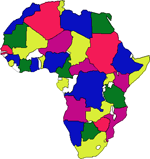[Published: Thursday November 13 2025]
 Israel's unexploded ordnance in Gaza are turning children's playgrounds into fields of death
ISRAELI OCCUPIED AND STARVED GAZA, 13 Nov. - (ANA) - More than a month after the supposed ceasefire, Gaza's streets remain scarred by war. Gaza City is a mosaic of destruction: houses reduced to skeletal frames, alleys choked with debris, and once-vibrant neighbourhoods echoing emptily with the memories of life that once was.
Among the ruins, there is a silent predator, lying in wait within toys, rubble, and every corner where children may go.
In the southern neighbourhood of Rimal, eight-year-old Mohammed al-Shafi'i searched for moments of joy amid piles of shattered concrete. Around him, half-collapsed walls leaned at odd angles, dust hung thick in the air, and sunlight fell in dim streams through the ruins.
His laughter pierced the dust-choked air, but it ended abruptly.
One of the unexploded bombs left by Israel that littered the neighbourhood detonated beside him, shattering his leg and hand, throwing him to the ground.
"I was filling a bottle with water when the explosion ripped through the air. I ran and found him lying there, covered in blood. Just hours before, he was laughing, building cars from rubble […] and now he may never walk the way he did. How do I explain to him that the world has become deadly?" his mother, Amal al-Shafei, recounts to The New Arab.
"I was playing… I made a car from a piece of metal… then everything exploded. The ground swallowed me. I can't run any more. I can't play. I try to avoid the pieces of metal and balls I see in the rubble… but sometimes, I feel them watching me… like death is waiting," Mohammed told TNA.
In the northern neighbourhood of Zeitoun, eleven-year-old Ahmed al-Razi experienced a similar fate. The area resembles a twisted metal labyrinth, with toppled walls and shattered rooftops.
Ahmed had been trying to fashion toys from empty rocket shells when a small metal object—mistaken for a toy—detonated in his hands, costing him his right hand and one eye.
His mother, Samia al-Razi, recalls the moment with trembling hands: "Ahmed was a joyful child, always inventing games from rubble, cans, and wood. Now, even a pebble terrifies him. His eyes lost part of their light that day, and so did his childhood."
"I thought it was a toy. I opened it […] Everything turned black. I can't play, can't run… even football is dangerous now," Ahmed told TNA.
These personal tragedies are part of a much larger, ongoing crisis. Palestinians in Gaza continue to face grave dangers from tens of thousands of unexploded ordnances left scattered across the territory following Israel's two-year genocidal war, according to the Gaza Rights Centre (GRC).
The bombs pose a daily threat to civilians, hinder humanitarian efforts, and obstruct rescue operations, debris clearance, and attempts to restore normal life.
The Israeli genocidal war, which began on 7 October 2023, has left much of Gaza's urban landscape in ruins, with entire neighbourhoods flattened, killing more than 69,000 people, mostly civilians, according to the Gaza-based health ministry.
The Gaza-based government media office estimates that around 20,000 unexploded munitions, including bombs, missiles, and artillery shells, remain buried across the enclave, weighing approximately 71,000 tons within an estimated 65 to 70 million tons of rubble.
"This has made Gaza one of the most dangerous places on earth," Ismail Thawabta, the head of the government media office, told TNA, warning that the territory could face "the largest humanitarian disaster in modern history if the threat is not urgently addressed."
UNRWA has similarly reported that more than 61 million tons of debris now cover Gaza.
Mahmoud Bassal, spokesman for Gaza's civil defence, told TNA that "many of these remnants have been detected inside residential buildings, on roads, and in agricultural areas, making every rescue or clean-up operation a life-threatening task."
Recent explosions underscore the ongoing risk. In Al-Zaytoun, a heavily bombarded neighbourhood of Gaza City, a shell detonated while three civilians attempted to clear rubble near their home, killing them instantly.
Other incidents occurred in al-Nuseirat refugee camp in central Gaza, where four debris workers were injured, and in Al-Qarar in southern Khan Younis.
"These incidents are stark reminders of the ongoing danger in every street and neighbourhood across Gaza," he said.
Mohammed, a local demining expert, told TNA they face many challenges. "We work in narrow alleyways, near collapsed houses, with children nearby. Each corner could hide a bomb. It is exhausting and mentally draining. Any mistake could cost a life."
"We lack modern equipment, spare parts, and fuel. We prioritise immediate dangers, leaving large areas unchecked. Children see rubble as a playground, unaware of the invisible threats beneath their feet," he said. - (ANA) -
AB/ANA/13 November 2025 - - -
|





